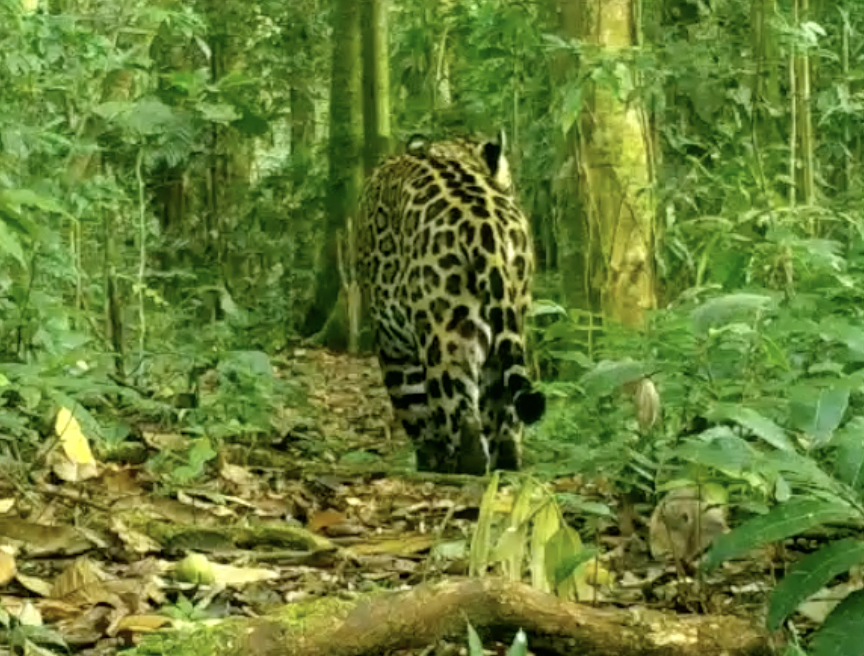
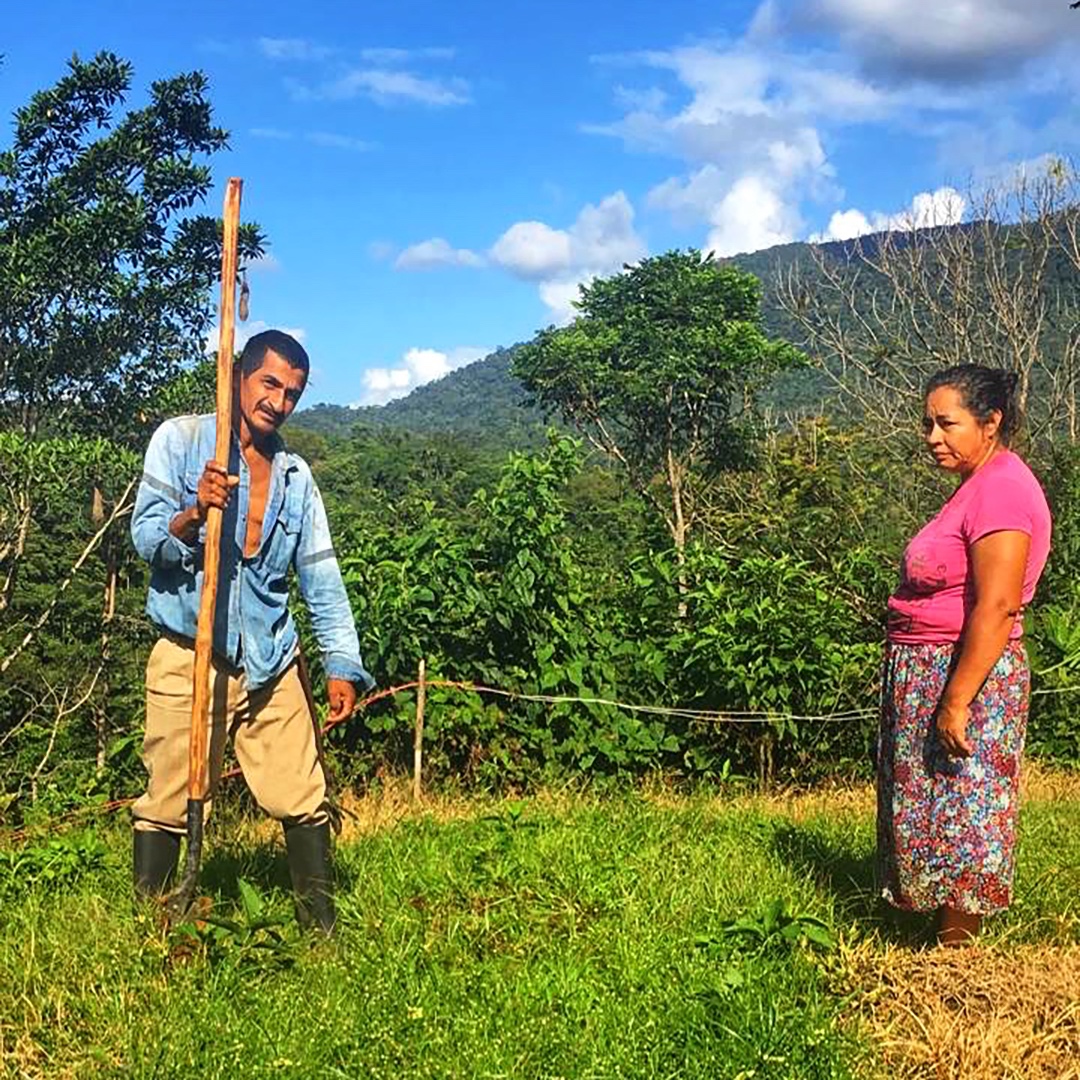
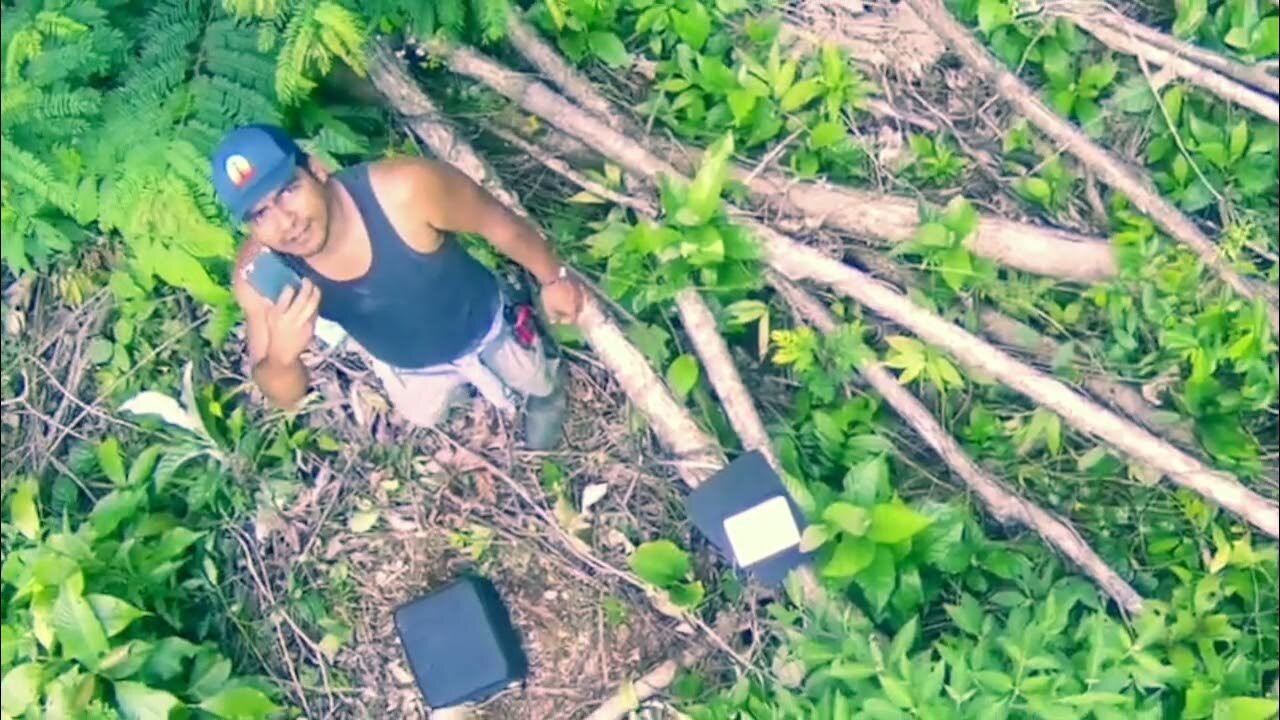
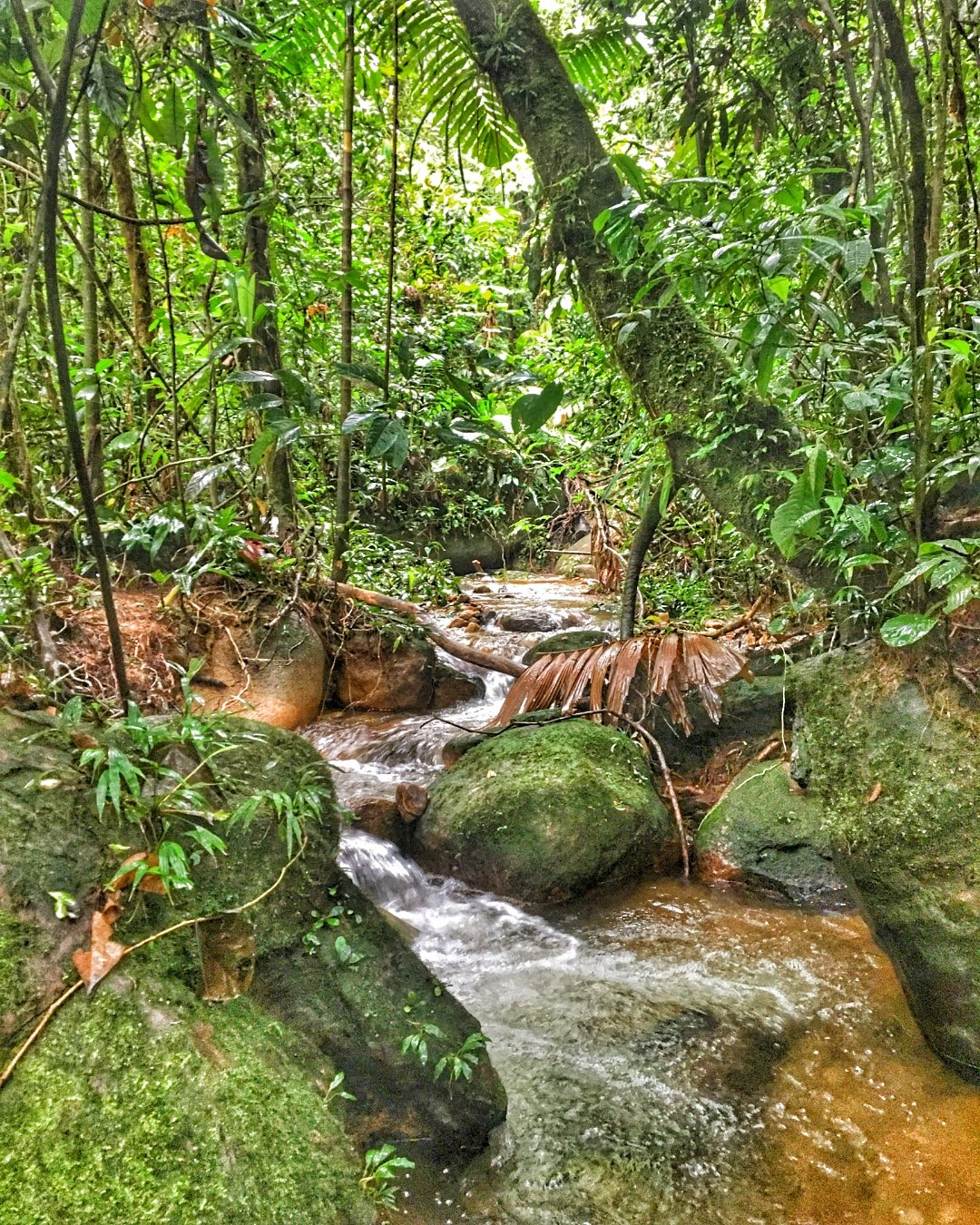
Savimbo began when five medical doctors and a community organization of small farm conservationists in Colombia asked an innovative technology company to help them stop the logging activity on their lands. The project was created, and began developing methodologies to document carbon sequestration through forest conservation.
The project began by showing farmers how to track their own offsets using trusted off-grid methods, and assessment toolkits soon included drone photography, satellite monitoring, machine learning, GPS, and blockchain to track offsets from creation to sale. The same tools were later used to develop water and biodiversity credits.
Savimbo pays subsistence farmers direct monthly payments to preserve their local ecosystems. Savimbo’s nonprofit arm subsidizes new communities wishing to certify and sell their credits and then equitably splits gross revenues .
Savimbo’s goal is to reverse and halt encroachment on pristine jungle. Savimbo supports a sustainable regional economy that measurably expands tropical forests and native biodiversity. It addresses multiple levels from smallholder farms of less than 5 hectare, to petroleum and mining interests and narco trafficking.
Savimbo directly specializes in using emerging technology to repurpose remote jungle economies from deforestation to reforesting.
Monitoring and assessing changes in forest cover, carbon stocks, and associated emissions or removals in carbon forestry projects or REDD+ (Reducing Emissions from Deforestation and Forest Degradation) initiatives.
Savimbo assesses and monitors its impact on forest carbon in relation to deforestation avoidance, reforestation, and biochar production. Monitoring protocols are required for each strategy.
Trust
Third-Party Verification
/On-Blockchain
Management practices that focus on strengthening or restoring forest ecosystems to increase carbon stocks and reduce GHG emissions; may also focus on reducing GHG emissions and biodiversity loss from forestry disturbance.
Savimbo supports forest conservation, reforestation efforts, and promotes ecologically-oriented smallholder farming practices. It also supports indigenous forest management practices.
Trust
Third-Party Verification
Projects or initiatives that combine both practices- and outcomes-based analyses to maximize the advantages of both approaches; practices-based methods tend to be highly efficient and cost-effective, while outcomes-based methods may provide more precise data on actual results.
While the impacts of some initiatives are readily measured and monitored, some practices with predictable incomes are assessed on the basis of fulfillment rather than on a complete set of data.
Trust
Self-Reported
/On-Blockchain
Eliminating the use of all pesticides, regardless of whether they are organic or synthetic; often requires the use of biological and physical methods for pest control.
Savimbo promotes ecological practices that reduce the use of pesticides and instead promote organic methods as an alternative to aerial pesticide applications.
Trust
Self-Reported
The practice of planting an area with trees to contribute to ecological restoration efforts in former forest ecosystems.
Savimbo has a forest conservation program certified by Cercarbono that has over 4,000 hectares contracted. It is connected with the REDD+ project with rolling enrollment to avoid loss.
Trust
Third-Party Verification
Strengthening of land-based ecosystems (e.g., forests, grasslands, deserts, tundra, taiga), includes preservation and strengthening of natural systems involving both living (plant and animal species) and non-living (water, soil, atmosphere) factors.
Savimbo carefully monitors primary tree diversity, biodiversity, and carbon. Its varied protocols provide layered assessments of how the project's efforts improve existing terrestrial ecosystems.
Trust
Third-Party Verification
/On-Blockchain
The protection and management of areas in an ecosystem where water drains to a common point (e.g., river, lake, ocean).
Savimbo protects watersheds by preventing deforestation, planting trees along waterways, reducing aerial pesticides, supporting smallholder stewardship, and through a variety of other initiatives.
Trust
Third-Party Verification
/On-Blockchain
Monitoring and assessing changes in forest cover, carbon stocks, and associated emissions or removals in carbon forestry projects or REDD+ (Reducing Emissions from Deforestation and Forest Degradation) initiatives.
Savimbo assesses and monitors its impact on forest carbon in relation to deforestation avoidance, reforestation, and biochar production. Monitoring protocols are required for each strategy.
Trust
Self-Reported
/On-Blockchain
Projects or initiatives that combine both practices- and outcomes-based analyses to maximize the advantages of both approaches; practices-based methods tend to be highly efficient and cost-effective, while outcomes-based methods may provide more precise data on actual results.
While the impacts of some initiatives are readily measured and monitored, some practices with predictable incomes are assessed on the basis of fulfillment rather than on a complete set of data.
Trust
Self-Reported
/On-Blockchain
Eliminating the use of all pesticides, regardless of whether they are organic or synthetic; often requires the use of biological and physical methods for pest control.
Savimbo promotes ecological practices that reduce the use of pesticides and instead promote organic methods as an alternative to aerial pesticide applications.
Trust
Self-Reported
The practice of planting an area with trees to contribute to ecological restoration efforts in former forest ecosystems.
Savimbo has a forest conservation program certified by Cercarbono that has over 4,000 hectares contracted. It is connected with the REDD+ project with rolling enrollment to avoid loss.
Trust
Third-Party Verification
Enhancing the amount and quality of organic materials present in the soil (e.g., decomposed plant and animal residues); plays an essential role in supporting healthy soils through plant growth, soil structure, water retention, nutrient cycling, and overall ecosystem function.
Savimbo's forest conservation and restoration efforts, in combination with their advancement of organic agriculture practices, all contribute to maintaining and improving soil organic matter.
Trust
Self-Reported
/On-Blockchain
Systems in place to collect, relocate, and dispose of solid and liquid waste materials produced by humans.
Savimbo educates stakeholders about managing human wastes with effective toilets and sewage management practices, and also provides education on appropriate practices for livestock waste management.
Trust
Self-Reported
Improvements to suitability of water for human uses; often through the reduction of pollutants or suspended sediments; frequently involves efforts to clean or restore groundwater resources.
Savimbo receives payments for clean water and for water protected on both banks of the Amazon River by showing preservation of primary forests and through invertebrate monitoring.
Trust
Third-Party Verification
/On-Blockchain
Monitoring physical, chemical, and biological characteristics of a water source or environment; prevents transmission of harmful bacteria to humans, mortality events, and environmental degradation.
Savimbo uses water quality monitoring programs for pesticides, chemicals, and sewage.
Trust
Third-Party Verification
/On-Blockchain
The protection and management of areas in an ecosystem where water drains to a common point (e.g., river, lake, ocean).
Savimbo protects watersheds by preventing deforestation, planting trees along waterways, reducing aerial pesticides, supporting smallholder stewardship, and through a variety of other initiatives.
Trust
Third-Party Verification
/On-Blockchain
Monitoring and assessing changes in forest cover, carbon stocks, and associated emissions or removals in carbon forestry projects or REDD+ (Reducing Emissions from Deforestation and Forest Degradation) initiatives.
Monitoring and assessing changes in forest cover, carbon stocks, and associated emissions or removals in carbon forestry projects or REDD+ (Reducing Emissions from Deforestation and Forest Degradation
Trust
Third-Party Verification
/On-Blockchain
Management practices that focus on strengthening or restoring forest ecosystems to increase carbon stocks and reduce GHG emissions; may also focus on reducing GHG emissions and biodiversity loss from forestry disturbance.
Savimbo supports forest conservation, reforestation efforts, and promotes ecologically-oriented smallholder farming practices. It also supports indigenous forest management practices.
Trust
Third-Party Verification
Projects or initiatives that combine both practices- and outcomes-based analyses to maximize the advantages of both approaches; practices-based methods tend to be highly efficient and cost-effective, while outcomes-based methods may provide more precise data on actual results.
While the impacts of some initiatives are readily measured and monitored, some practices with predictable incomes are assessed on the basis of fulfillment rather than on a complete set of data.
Trust
Self-Reported
/On-Blockchain
Eliminating the use of all pesticides, regardless of whether they are organic or synthetic; often requires the use of biological and physical methods for pest control.
Savimbo promotes ecological practices that reduce the use of pesticides and instead promote organic methods as an alternative to aerial pesticide applications.
Trust
Self-Reported
The practice of planting an area with trees to contribute to ecological restoration efforts in former forest ecosystems.
Savimbo has a forest conservation program certified by Cercarbono that has over 4,000 hectares contracted. It is connected with the REDD+ project with rolling enrollment to avoid loss.
Trust
Third-Party Verification
Enhancing the amount and quality of organic materials present in the soil (e.g., decomposed plant and animal residues); plays an essential role in supporting healthy soils through plant growth, soil structure, water retention, nutrient cycling, and overall ecosystem function.
Savimbo's forest conservation and restoration efforts, in combination with their advancement of organic agriculture practices, all contribute to maintaining and improving soil organic matter.
Trust
Third-Party Verification
/On-Blockchain
Strengthening of land-based ecosystems (e.g., forests, grasslands, deserts, tundra, taiga), includes preservation and strengthening of natural systems involving both living (plant and animal species) and non-living (water, soil, atmosphere) factors.
Savimbo carefully monitors primary tree diversity, biodiversity, and carbon. Its varied protocols provide layered assessments of how the project's efforts improve existing terrestrial ecosystems.
Trust
Third-Party Verification
/On-Blockchain
Systems in place to collect, relocate, and dispose of solid and liquid waste materials produced by humans.
Savimbo educates stakeholders about managing human wastes with effective toilets and sewage management practices, and also provides education on appropriate practices for livestock waste management.
Trust
Self-Reported
The protection and management of areas in an ecosystem where water drains to a common point (e.g., river, lake, ocean).
Savimbo protects watersheds by preventing deforestation, planting trees along waterways, reducing aerial pesticides, supporting smallholder stewardship, and through a variety of other initiatives.
Trust
Third-Party Verification
/On-Blockchain
Expanding the variety of species present within a particular habitat or ecosystem; land stewardship can improve by conserving and protecting wildlife areas; good farming practices that provide ecosystem benefits can also improve and extend the portfolio of on-farm products.
Expanding the variety of species present within a particular habitat or ecosystem; land stewardship can improve by conserving and protecting wildlife areas; good farming practices that provide ecosyst
Trust
Third-Party Verification
/On-Blockchain
Long-term monitoring programs established to track changes in species populations, diversity, and ecosystem health over time.
Monitoring biodiversity is such a core strength to Savimbo, it is working toward offering a certified biodiversity credit to other projects around the world.
Trust
Raw Data
/On-Blockchain
Unmanned recording devices deployed by research projects to capture images, videos and sounds of wildlife; provides insights into species populations, behavior, and community composition.
Savimbo uses game cameras and other recording equipment to monitor biodiversity and wildlife that serve as a critical indicator species for ecosystem integrity.
Trust
Third-Party Verification
/On-Blockchain
Global navigational system that utilizes a receiver to collect satellite signals; owned by the United States and operated by the United States Space Force; in the context of EBF, may refer to an MRV aspect of collecting and monitoring data.
Savimbo uses Google Earth Engine, satellite data, government mapping, and other resources to link MRV data to specific locations.
Trust
Third-Party Verification
/On-Blockchain
Analysis and characterization of an area’s ecology to visualize extent and suitability of habitats for specific species.
Savimbo uses an automated satellite system for habitat monitoring. Community scientists and indigenous groups conduct sentinel species observations using a photo and geocode system.
Trust
Third-Party Verification
/On-Blockchain
The practice of planting an area with trees to contribute to ecological restoration efforts in former forest ecosystems.
Savimbo has a forest conservation program certified by Cercarbono that has over 4,000 hectares contracted. It is connected with the REDD+ project with rolling enrollment to avoid loss.
Trust
Third-Party Verification
Strengthening of land-based ecosystems (e.g., forests, grasslands, deserts, tundra, taiga), includes preservation and strengthening of natural systems involving both living (plant and animal species) and non-living (water, soil, atmosphere) factors.
Savimbo carefully monitors primary tree diversity, biodiversity, and carbon. Its varied protocols provide layered assessments of how the project's efforts improve existing terrestrial ecosystems.
Trust
Third-Party Verification
/On-Blockchain
Systems in place to collect, relocate, and dispose of solid and liquid waste materials produced by humans.
Savimbo educates stakeholders about managing human wastes with effective toilets and sewage management practices, and also provides education on appropriate practices for livestock waste management.
Trust
Self-Reported
Improvements to suitability of water for human uses; often through the reduction of pollutants or suspended sediments; frequently involves efforts to clean or restore groundwater resources.
Savimbo receives payments for clean water and for water protected on both banks of the Amazon River by showing preservation of primary forests and through invertebrate monitoring.
Trust
Third-Party Verification
/On-Blockchain
Management practices that focus on strengthening or restoring forest ecosystems to increase carbon stocks and reduce GHG emissions; may also focus on reducing GHG emissions and biodiversity loss from forestry disturbance.
Savimbo supports forest conservation, reforestation efforts, and promotes ecologically-oriented smallholder farming practices. It also supports indigenous forest management practices.
Trust
Third-Party Verification
Fair wages that, beyond providing bare minimum for workers and their families, also allow workers to attain greater mobility and autonomy over their lives.
Savimbo pays a monthly living wage to participants through micropayments to remove the risk of program participation to its workers.
Trust
Self-Reported
Eliminating the use of all pesticides, regardless of whether they are organic or synthetic; often requires the use of biological and physical methods for pest control.
Savimbo promotes ecological practices that reduce the use of pesticides and instead promote organic methods as an alternative to aerial pesticide applications.
Trust
Self-Reported
Sharing knowledge with the public and local stakeholders.
Savimbo provides educational programs to schools on the conservation of rare species and on related stewardship practices and also to influential scientists and leaders outside of the Amazon.
Trust
Self-Reported
Formal partnership between parties with an interest in a project’s success that can affect and be affected by it; may be partners in decision-making, financial gain (e.g., investors), or in other ways.
Savimbo is managed by 100% local staff. It develops projects with indigenous stakeholders to incorporate traditional knowledge and to ensure community buy-in and long-term cooperation.
Trust
Self-Reported
Improvements to suitability of water for human uses; often through the reduction of pollutants or suspended sediments; frequently involves efforts to clean or restore groundwater resources.
Savimbo receives payments for clean water and for water protected on both banks of the Amazon River by showing preservation of primary forests and through invertebrate monitoring.
Trust
Third-Party Verification
/On-Blockchain
Monitoring physical, chemical, and biological characteristics of a water source or environment; prevents transmission of harmful bacteria to humans, mortality events, and environmental degradation.
Savimbo uses water quality monitoring programs for pesticides, chemicals, and sewage.
Trust
Third-Party Verification
/On-Blockchain
The protection and management of areas in an ecosystem where water drains to a common point (e.g., river, lake, ocean).
Savimbo protects watersheds by preventing deforestation, planting trees along waterways, reducing aerial pesticides, supporting smallholder stewardship, and through a variety of other initiatives.
Trust
Third-Party Verification
/On-Blockchain
Monitoring and assessing changes in forest cover, carbon stocks, and associated emissions or removals in carbon forestry projects or REDD+ (Reducing Emissions from Deforestation and Forest Degradation) initiatives.
Monitoring and assessing changes in forest cover, carbon stocks, and associated emissions or removals in carbon forestry projects or REDD+ (Reducing Emissions from Deforestation and Forest Degradation
Trust
Third-Party Verification
/On-Blockchain
Management practices that focus on strengthening or restoring forest ecosystems to increase carbon stocks and reduce GHG emissions; may also focus on reducing GHG emissions and biodiversity loss from forestry disturbance.
Savimbo supports forest conservation, reforestation efforts, and promotes ecologically-oriented smallholder farming practices. It also supports indigenous forest management practices.
Trust
Third-Party Verification
Global navigational system that utilizes a receiver to collect satellite signals; owned by the United States and operated by the United States Space Force; in the context of EBF, may refer to an MRV aspect of collecting and monitoring data.
Savimbo uses Google Earth Engine, satellite data, government mapping, and other resources to link MRV data to specific locations.
Trust
Self-Reported
/On-Blockchain
Projects or initiatives that combine both practices- and outcomes-based analyses to maximize the advantages of both approaches; practices-based methods tend to be highly efficient and cost-effective, while outcomes-based methods may provide more precise data on actual results.
While the impacts of some initiatives are readily measured and monitored, some practices with predictable incomes are assessed on the basis of fulfillment rather than on a complete set of data.
Trust
Self-Reported
/On-Blockchain
Eliminating the use of all pesticides, regardless of whether they are organic or synthetic; often requires the use of biological and physical methods for pest control.
Savimbo promotes ecological practices that reduce the use of pesticides and instead promote organic methods as an alternative to aerial pesticide applications.
Trust
Self-Reported
The practice of planting an area with trees to contribute to ecological restoration efforts in former forest ecosystems.
Savimbo has a forest conservation program certified by Cercarbono that has over 4,000 hectares contracted. It is connected with the REDD+ project with rolling enrollment to avoid loss.
Trust
Third-Party Verification
Enhancing the amount and quality of organic materials present in the soil (e.g., decomposed plant and animal residues); plays an essential role in supporting healthy soils through plant growth, soil structure, water retention, nutrient cycling, and overall ecosystem function.
Savimbo's forest conservation and restoration efforts, in combination with their advancement of organic agriculture practices, all contribute to maintaining and improving soil organic matter.
Trust
Third-Party Verification
/On-Blockchain
Strengthening of land-based ecosystems (e.g., forests, grasslands, deserts, tundra, taiga), includes preservation and strengthening of natural systems involving both living (plant and animal species) and non-living (water, soil, atmosphere) factors.
Savimbo carefully monitors primary tree diversity, biodiversity, and carbon. Its varied protocols provide layered assessments of how the project's efforts improve existing terrestrial ecosystems.
Trust
Third-Party Verification
/On-Blockchain
The protection and management of areas in an ecosystem where water drains to a common point (e.g., river, lake, ocean).
Savimbo protects watersheds by preventing deforestation, planting trees along waterways, reducing aerial pesticides, supporting smallholder stewardship, and through a variety of other initiatives.
Trust
Third-Party Verification
/On-Blockchain
Savimbo’s “fair trade” approach to ecological benefits credits and their commitment to indigenous knowledge and governance informs the entire path from MRV processes to market strategies. To provide subsistence farmers in tropical forests with direct monthly payments for ecosystem preservation, Savimbo’s MRV processes blend hard science and emerging technologies into affordable methodologies for remote, off-grid locations.
Savimbo developed a ground-up, people-forward model that eliminated intermediaries who often consume a substantial portion of revenues through MRV contracts and brokerage fees. Training community members to be the custodians not only of their environs but also of their data stands as a hallmark of Savimbo’s MRV methodologies, technology choices, and market strategies.
Like many projects, Savimbo originally embarked on a path of selling carbon credits to generate revenues for the true stewards of the Amazon rainforest. Measurement methodologies tended to reflect internationally-recognized protocols that could be adapted to local technological and financial capacity, such as tree diameter at breast height, satellite quantification based on canopy cover, below-canopy algorithms, and deforestation calculations.
Recognizing that the ecological benefits of rainforest conservation stretched far beyond carbon, the leaders of Savimbo began to consider additional benefits that they could quantify, often in conjunction with the collection of carbon data. For example, the local manufacturing, distribution, and use of biochar equipment could be linked to soil, carbon, and equity, with quantifiable impacts.
Monitoring of indicator forest species such as jaguars provides data on habitat health and integrity when linked to freely available satellite data, forming the basis of biodiversity credits. Dragonflies over waterways are sentinel species linked to water quality, supporting valuations for water credits. Blockchain data linking the entire process from the creation of ecological benefits to the direct payment of stewards and community researchers provides an API for ensuring equity. Carbon was simply a starting point for data collection.
Eliminating as many intermediaries as possible means that Savimbo must develop reporting methodologies that ensure trust, transparency, and traceability. In order to transform self-reported data into a trusted and transparent credit, Savimbo captures and shares “raw data” that is at once personalized, time-stamped, and geocoded. Photos, videos, and audio document sentinel fauna, forest density, rare plant species, tree plantings, and other key data. Drones, mobile phones, GPS units, and game cameras serve as key elements in the Savimbo toolbox. Savimbo staff collect these data and places them on-cloud, where they are accessible for review by potential credit purchasers, sometimes as front-facing website content.
Savimbo stores data in the cloud that is mirrored to registries for buyer access. When a buyer purchases credits, the associated data are then moved onto blockchain. Savimbo uses a combination of a Web2 system, banking/fiat exchange, and cloud computing as the backbone of their reporting processes.
Savimbo’s carbon credits are certified through the Cercarbono carbon standard credit program, a respected certifier for the voluntary carbon market. Cercarbono partners with EcoRegistry. Savimbo currently has 4000 hectares under contract, grouped together as a REDD+ project for avoided carbon loss through its protected designation. Pilot studies indicated the avoided loss to be between 800-1200 tons per hectare. Rolling enrollment provides the potential for growth of these conserved areas, and periodic audits substantiate Cercarbano’s verification.
Without an existing certifying standard for biodiversity, the Savimbo community began work on creating an internationally-recognized standard for certification of projects like theirs. After review by multiple governing bodies and three international certifiers, their biodiversity methodology is on its way to formal approval, allowing Savimbo not only to generate their own biodiversity credits but also allowing other projects to do the same, adapting the accepted methodologies to their ecosystems.
Risk mitigation is critical to Savimbo’s success. It uses existing risk avoidance strategies developed by reputable international initiatives such as REDD+ and Cercarbono. Savimbo is also careful to ensure that risk management is contextualized to the ecosystems, economics, and dynamic political realities of the Amazon region and Colombia in particular.
In many ways, Savimbo’s long-term conservation successes depend upon its financial successes, as living wages tied to conservation help mitigate land-clearing, illegal logging, and over-harvesting of plants and wildlife. Mining, petroleum extraction, and pesticide applications also pose challenges, as do political upheaval and narcotrafficking. Climate change threatens ecosystem stability through changes in precipitation and an increased potential for wildfires. Savimbo’s commitment to its local communities and the ecosystems upon which they depend is probably its most effective risk management strategy
With a 30-year contract, Savimbo aspires to ensure the long-term impact of its initiatives. While carbon was the initial focus and permanence was based on carbon stocks, Savimbo’s focus on multiple ecological benefits and their potential revenue streams is critical to ensuring ecosystem preservation. The increased revenue potential for the development of multiple credits not only ensures the economic viability of surrounding communities, but it also reinforces the need for holistic approaches to ecosystem conservation.
Savimbo uses conservative discounting for carbon stocks, as required by the Cercarbono and REDD+ “grouped project” methodology that links multiple parcels into a single project. Savimbo can also apply this conservative discounting to non-carbon credits. In addition, Savimbo utilizes a buffer pool, following the Cercarbono and REDD+ grouped project standards. Fortunately,
the same buffer pool can be applied to non-carbon project credits.
Savimbo did extensive research on any potential for additionality based on their project plans according to Cercarbono’s standards and determined that additionality issues were unlikely for carbon or for other ecological benefits.
Savimbo conducted assessments based on Cercarbono and REDD+ standards and determined there was not a likelihood of leakage outside of Savimbo’s boundaries that would offset the project’s targeted carbon emission reductions. Leakage related to other ecological benefits was also unlikely.
Savimbo’s maintains an agile market approach by adopting an agnostic approach to exchanges. They sell credits direct to consumers, via checkout functions, through Web3 exchanges and SAFTs, over-the-counter, and through environmental markets such as CBL and Xpansive.
Savimbo’s buyers are international, primarily from Latin America, United States, Canada, UAE, Singapore and Europe. Their purchasers are all known, and thus far, have been consumers and small businesses. Several corporate buyers are waiting for certification. Savimbo project buyers are motivated by offsetting, consumer publicity, and personal carbon footprint reduction. Savimbo retains ownership until final retirement, but they do allow preselling or trading of fractional credits.
The fair-trade focus frames how Savimbo operates in the marketplace on behalf of its communities. The goal is to return as much of the credit sale as possible to the small farmers and other stewards by minimizing intermediaries that tend to take from 50-80% of the sale, leaving little for the generators of value. Small farmers receive 20-80% of the gross revenues of ecological benefits credits (e.g., carbon, biodiversity, water) through direct monthly micropayments. Not only do small farmers benefit as co-owners of the business, but Savimbo’s staff is 100% local and equitably hired.
About
Team
The EBF platform features an unprecedented collaboration of climate experts, web3 and blockchain technologists, carbon registries, standards organizations, environmentalists, academics, impact investors, and the ReFi Community in support of an accelerated response to our planet’s greatest challenges.
This website was built by The Lexicon™, a 501(c)(3) tax-exempt nonprofit organization headquartered in Petaluma, CA.
Check out our Privacy Policy, Cookie Policy, and Terms of Use.
© 2024 – Lexicon of Food™
We have no idea who grows our food, what farming practices they use, the communities they support, or what processing it undergoes before reaching our plates.
As a result, we have no ability to make food purchases that align with our values as individuals, or our missions as companies.
To change that, we’ve asked experts to demystify the complexity of food purchasing so that you can better informed decisions about what you buy.
The Lexicon of Food’s community of experts share their insights and experiences on the complex journey food takes to reach our plates. Their work underscores the need for greater transparency and better informed decision-making in shaping a healthier and more sustainable food system for all.
Professionals at universities and research institutions seeking scholarly articles, data, and resources.
Tools to align investment and grant making strategies with advances in agriculture, food production, and emerging markets.
Professionals seeking information on ingredient sourcing, menu planning, sustainability, and industry trends.
Chefs and food industry professionals seeking inspiration on ingredients and sustainable trends to enhance their work.
Individuals interested in food products, recipes, nutrition, and health-related information for personal or family use.
Individuals producing food, fiber, feed, and other agricultural products that support both local and global food systems.
This online platform is years in the making, featuring the contributions of 1000+ companies and NGOs across a dzen domain areas. To introduce you to their work, we’ve assembled personalized experiences with insights from our community of international experts.
Businesses engaged in food production, processing, and distribution that seek insight from domain experts
Those offering specialized resources and support and guidance in agriculture, food production, and nutrition.
Individuals who engage and educate audience on themes related to agriculture, food production, and nutrition.
Nutritional information for professionals offering informed dietary choices that help others reach their health objectives
Those advocating for greater awareness and stronger action to address climate impacts on agriculture and food security.
Professionals seeking curriculum materials, lesson plans, and learning tools related to food and agriculture.
Over half the world’s agricultural production comes from only three crops. Can we bring greater diversity to our plates?
In the US, four companies control nearly 85% of the beef we consume. Can we develop more regionally-based markets?
How can we develop alternatives to single-use plastics that are more sustainable and environmentally friendly?
Could changing the way we grow our food provide benefits for people and the planet, and even respond to climate change?
Can we meet the growing global demand for protein while reducing our reliance on traditional animal agriculture?
It’s not only important what we eat but what our food comes in. Can we develop tools that identify toxic materials used in food packaging?
Explore The Lexicon’s collection of immersive storytelling experiences featuring insights from our community of international experts.
The Great Protein Shift
Our experts use an engaging interactive approach to break down the technologies used to create these novel proteins.
Lexicon of Impacts
Accelerate positive impacts building a common language for investors, communities and project developers to activate catalytic capital for our planet.
Food-related chronic diseases are the biggest burden on healthcare systems. What would happen if we treated food as medicine?
How can we responsibly manage our ocean fisheries so there’s enough seafood for everyone now and for generations to come?
Mobilizing agronomists, farmers, NGOs, chefs, and food companies in defense of biodiversity in nature, agriculture, and on our plates.
Can governments develop guidelines that shift consumer diets, promote balanced nutrition and reduce the risk of chronic disease?
Will sustainably raising shellfish, finfish, shrimp and algae meet the growing demand for seafood while reducing pressure on wild fisheries?
How can a universal visual language to describe our food systems bridge cultural barriers and increase consumer literacy?
What if making the right food choices could be an effective tool for addressing a range of global challenges?
Let’s start with climate change. While it presents our planet with existential challenges, biodiversity loss, desertification, and water scarcity should be of equal concern—they’re all connected.
Instead of seeking singular solutions, we must develop a holistic approach, one that channel our collective energies and achieve positive impacts where they matter most.
To maximize our collective impact, EBF can help consumers focus on six equally important ecological benefits: air, water, soil, biodiversity, equity, and carbon.
We’ve gathered domain experts from over 1,000 companies and organizations working at the intersection of food, agriculture, conservation, and climate change.
The Lexicon™ is a California-based nonprofit founded in 2009 with a focus on positive solutions for a more sustainable planet.
For the past five years, it has developed an “activator for good ideas” with support from Food at Google. This model gathers domain experts from over 1,000 companies and organizations working at the intersection of food, agriculture, conservation, and climate change.
Together, the community has reached consensus on strategies that respond to challenges across multiple domain areas, including biodiversity, regenerative agriculture, food packaging, aquaculture, and the missing middle in supply chains for meat.
Lexicon of Food is the first public release of that work.
Over half the world’s agricultural production comes from only three crops. Can we bring greater diversity to our plates?
In the US, four companies control nearly 85% of the beef we consume. Can we develop more regionally-based markets?
How can we develop alternatives to single-use plastics that are more sustainable and environmentally friendly?
Could changing the way we grow our food provide benefits for people and the planet, and even respond to climate change?
Can we meet the growing global demand for protein while reducing our reliance on traditional animal agriculture?
It’s not only important what we eat but what our food comes in. Can we develop tools that identify toxic materials used in food packaging?
Explore The Lexicon’s collection of immersive storytelling experiences featuring insights from our community of international experts.
The Great Protein Shift
Our experts use an engaging interactive approach to break down the technologies used to create these novel proteins.
Ten Principles for Regenerative Agriculture
What is regenerative agriculture? We’ve developed a framework to explain the principles, practices, ecological benefits and language of regenerative agriculture, then connected them to the UN’s Sustainable Development Goals.
Food-related chronic diseases are the biggest burden on healthcare systems. What would happen if we treated food as medicine?
How can we responsibly manage our ocean fisheries so there’s enough seafood for everyone now and for generations to come?
Mobilizing agronomists, farmers, NGOs, chefs, and food companies in defense of biodiversity in nature, agriculture, and on our plates.
Can governments develop guidelines that shift consumer diets, promote balanced nutrition and reduce the risk of chronic disease?
Will sustainably raising shellfish, finfish, shrimp and algae meet the growing demand for seafood while reducing pressure on wild fisheries?
How can a universal visual language to describe our food systems bridge cultural barriers and increase consumer literacy?
This game was designed to raise awareness about the impacts our food choices have on our own health, but also the environment, climate change and the cultures in which we live.
First, you can choose one of the four global regions and pick a character that you want to play.
Each region has distinct cultural, economic, historical, and agricultural capacities to feed itself, and each character faces different challenges, such as varied access to food, higher or lower family income, and food literacy.
As you take your character through their day, select the choices you think they might make given their situation.
At the end of the day you will get a report on the impact of your food choices on five areas: health, healthcare, climate, environment and culture. Take some time to read through them. Now go back and try again. Can you make improvements in all five areas? Did one area score higher, but another score lower?
FOOD CHOICES FOR A HEALTHY PLANET will help you better understand how all these regions and characters’ particularities can influence our food choices, and how our food choices can impact our personal health, national healthcare, environment, climate, and culture. Let’s Play!
The FOOD CHOICES FOR A HEALTHY PLANET game allows users to experience the dramatic connections between food and climate in a unique and engaging way. The venue and the game set-up provides attendees with a fun experience, with a potential to add a new layer of storytelling about this topic.
Starting the game: the pilot version of the game features four country/regions: Each reflects a different way people (and the national dietary guidelines) look at diets: Nordic Countries (sustainability), Brazil (local and whole foods instead of ultra-processed foods); Canada (plant-forward), and Indonesia (developing countries).
Personalizing the game: players begin by choosing a country and then a character who they help in making food choices over the course of one day. Later versions may allow for creating custom avatars.
Making tough food choices: This interactive game for all ages shows how the food choices we make impact our health and the environment, and even contribute to climate change.
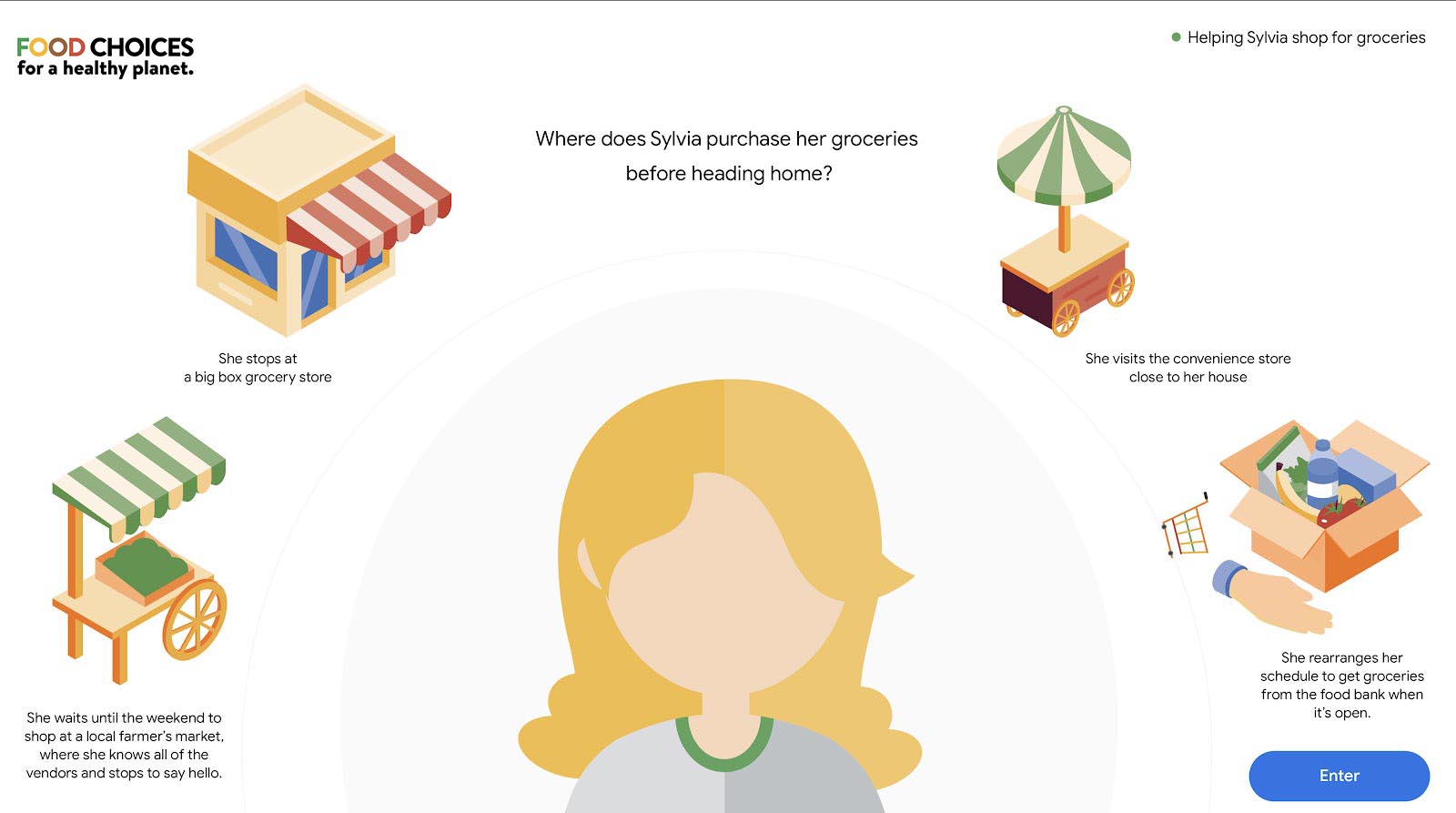

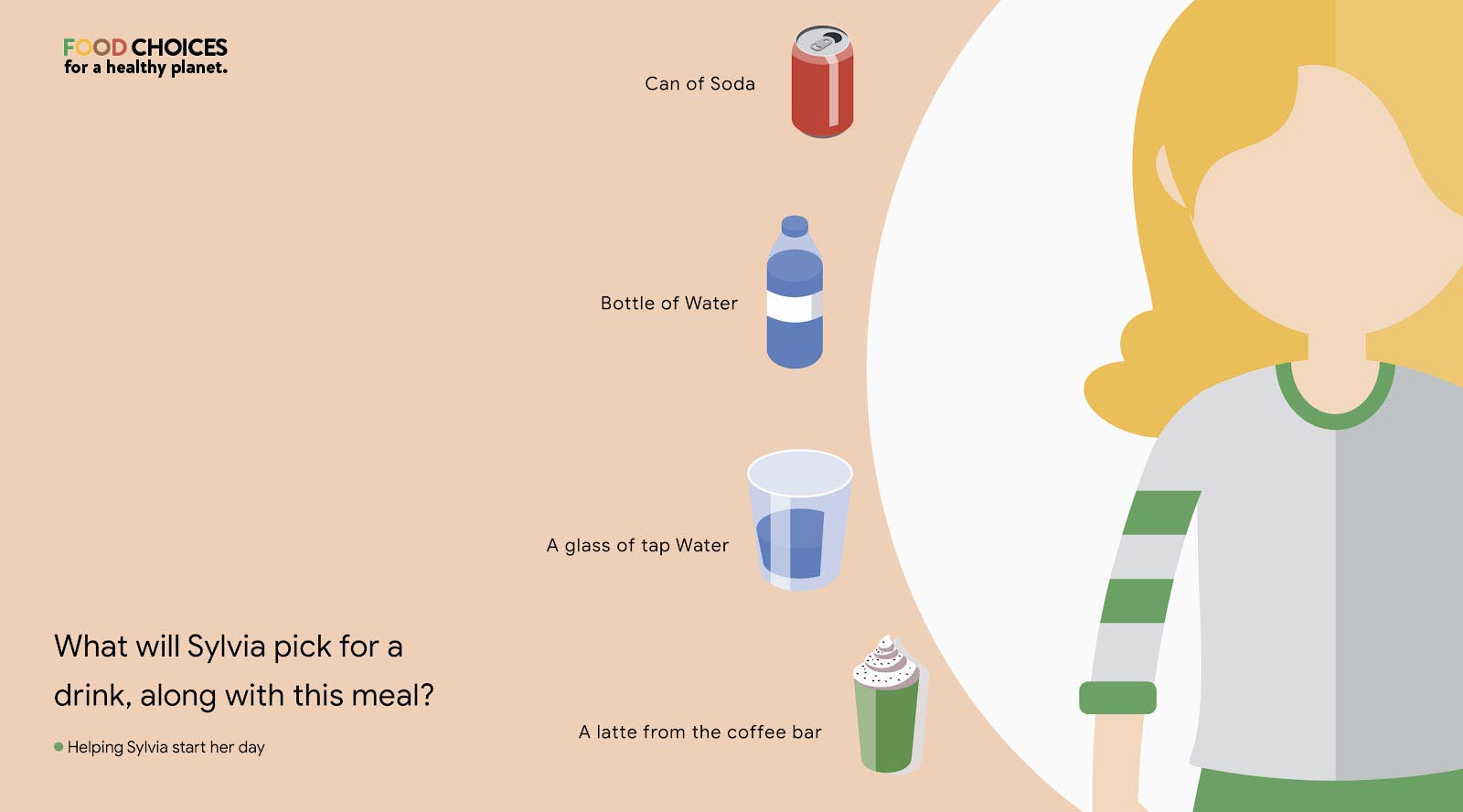
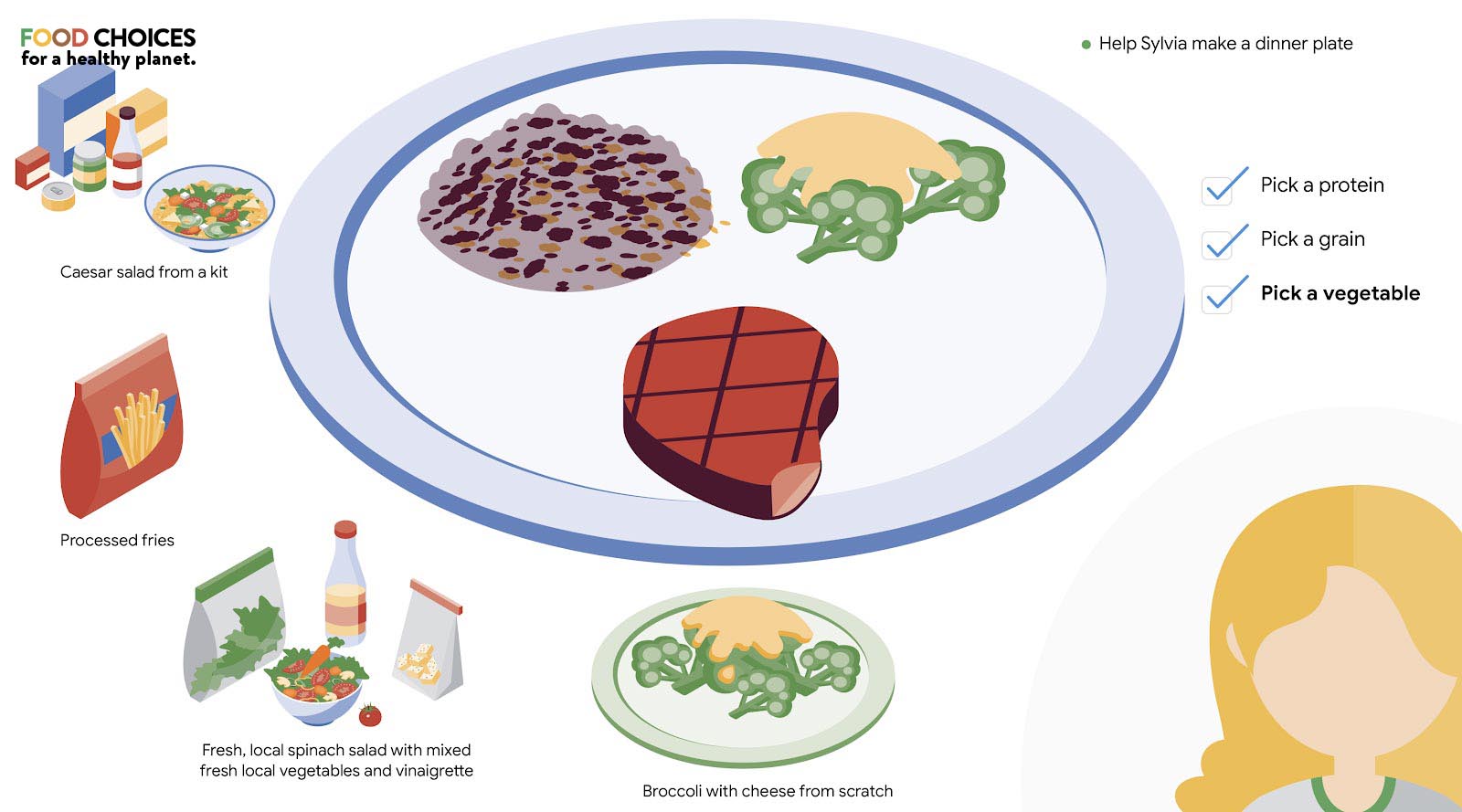
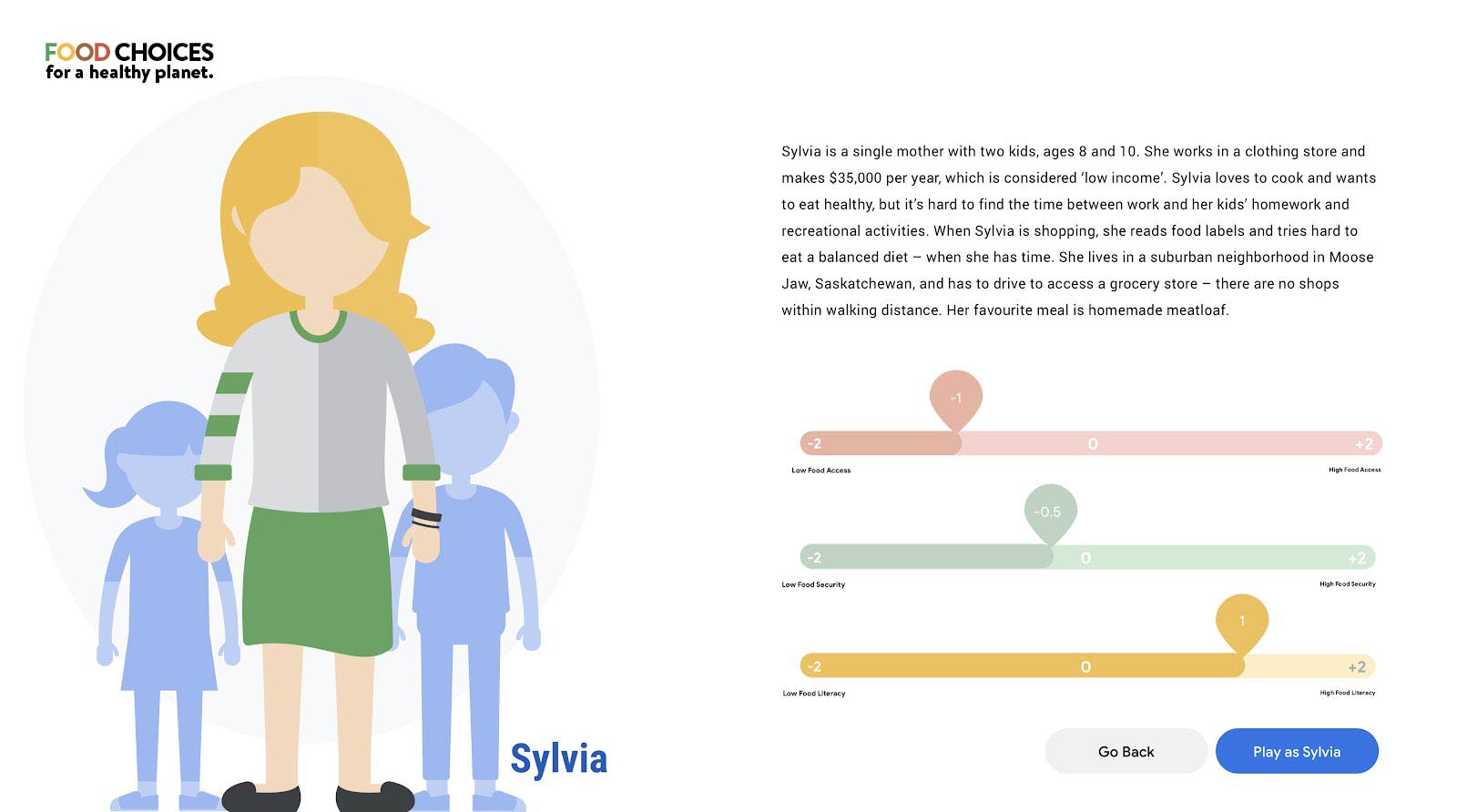
What we eat matters: at the end of each game, players learn that every decision they make impacts not only their health, but a national healthcare system, the environment, climate and even culture.
We’d love to know more about you and why you think you will be a great fit for this position! Shoot us an email introducing you and we’ll get back to you as soon as possible!
Providing best water quality conditions to ensure optimal living condition for growth, breeding and other physiological needs
Water quality is sourced from natural seawater with dependency on the tidal system. Water is treated to adjust pH and alkalinity before stocking.
Producers that own and manages the farm operating under small-scale farming model with limited input, investment which leads to low to medium production yield
All 1,149 of our farmers in both regencies are smallholder farmers who operate with low stocking density, traditional ponds, and no use of any other intensification technology.
Safe working conditions — cleanliness, lighting, equipment, paid overtime, hazard safety, etc. — happen when businesses conduct workplace safety audits and invest in the wellbeing of their employees
Company ensure implementation of safe working conditions by applying representative of workers to health and safety and conduct regular health and safety training. The practices are proven by ASIC standards’ implementation
Implementation of farming operations, management and trading that impact positively to community wellbeing and sustainable better way of living
The company works with local stakeholders and local governments to create support for farmers and the farming community in increasing resilience. Our farming community is empowered by local stakeholders continuously to maintain a long generation of farmers.
Freezing seafood rapidly when it is at peak freshness to ensure a higher quality and longer lasting product
Our harvests are immediately frozen with ice flakes in layers in cool boxes. Boxes are equipped with paper records and coding for traceability. We ensure that our harvests are processed with the utmost care at <-18 degrees Celsius.
Sourcing plant based ingredients, like soy, from producers that do not destroy forests to increase their growing area and produce fish feed ingredients
With adjacent locations to mangroves and coastal areas, our farmers and company are committed to no deforestation at any scale. Mangrove rehabilitation and replantation are conducted every year in collaboration with local authorities. Our farms are not established in protected habitats and have not resulted from deforestation activity since the beginning of our establishment.
Implement only natural feeds grown in water for aquatic animal’s feed without use of commercial feed
Our black tiger shrimps are not fed using commercial feed. The system is zero input and depends fully on natural feed grown in the pond. Our farmers use organic fertilizer and probiotics to enhance the water quality.
Enhance biodiversity through integration of nature conservation and food production without negative impact to surrounding ecosysytem
As our practices are natural, organic, and zero input, farms coexist with surrounding biodiversity which increases the volume of polyculture and mangrove coverage area. Farmers’ groups, along with the company, conduct regular benthic assessments, river cleaning, and mangrove planting.
THE TERM “MOONSHOT” IS OFTEN USED TO DESCRIBE an initiative that goes beyond the confines of the present by transforming our greatest aspirations into reality, but the story of a moonshot isn’t that of a single rocket. In fact, the Apollo program that put Neil Armstrong on the moon was actually preceded by the Gemini program, which in a two-year span rapidly put ten rockets into space. This “accelerated” process — with a new mission nearly every 2-3 months — allowed NASA to rapidly iterate, validate their findings and learn from their mistakes. Telemetry. Propulsion. Re-entry. Each mission helped NASA build and test a new piece of the puzzle.
The program also had its fair share of creative challenges, especially at the outset, as the urgency of the task at hand required that the roadmap for getting to the moon be written in parallel with the rapid pace of Gemini missions. Through it all, the NASA teams never lost sight of their ultimate goal, and the teams finally aligned on their shared responsibilities. Within three years of Gemini’s conclusion, a man did walk on the moon.
FACT is a food systems solutions activator that assesses the current food landscape, engages with key influencers, identifies trends, surveys innovative work and creates greater visibility for ideas and practices with the potential to shift key food and agricultural paradigms.
Each activator focuses on a single moonshot; instead of producing white papers, policy briefs or peer-reviewed articles, these teams design and implement blueprints for action. At the end of each activator, their work is released to the public and open-sourced.
As with any rapid iteration process, many of our activators re-assess their initial plans and pivot to address new challenges along the way. Still, one thing has remained constant: their conviction that by working together and pooling their knowledge and resources, they can create a multiplier effect to more rapidly activate change.
Co-Founder
THE LEXICON
Vice President
Global Workplace Programs
GOOGLE
Who can enter and how selections are made.
A Greener Blue is a global call to action that is open to individuals and teams from all over the world. Below is a non-exhaustive list of subjects the initiative targets.
To apply, prospective participants will need to fill out the form on the website, by filling out each part of it. Applications left incomplete or containing information that is not complete enough will receive a low score and have less chance of being admitted to the storytelling lab.
Nonprofit organizations, communities of fishers and fish farmers and companies that are seeking a closer partnership or special support can also apply by contacting hello@thelexicon.org and interacting with the members of our team.
Special attention will be given to the section of the form regarding the stories that the applicants want to tell and the reasons for participating. All proposals for stories regarding small-scale or artisanal fishers or aquaculturists, communities of artisanal fishers or aquaculturists, and workers in different steps of the seafood value chain will be considered.
Stories should show the important role that these figures play in building a more sustainable seafood system. To help with this narrative, the initiative has identified 10 principles that define a more sustainable seafood system. These can be viewed on the initiative’s website and they state:
Seafood is sustainable when:
Proposed stories should show one or more of these principles in practice.
Applications are open from the 28th of June to the 15th of August 2022. There will be 50 selected applicants who will be granted access to The Lexicon’s Total Storytelling Lab. These 50 applicants will be asked to accept and sign a learning agreement and acceptance of participation document with which they agree to respect The Lexicon’s code of conduct.
The first part of the lab will take place online between August the 22nd and August the 26th and focus on training participants on the foundation of storytelling, supporting them to create a production plan, and aligning all of them around a shared vision.
Based on their motivation, quality of the story, geography, and participation in the online Lab, a selected group of participants will be gifted a GoPro camera offered to the program by GoPro For A Change. Participants who are selected to receive the GoPro camera will need to sign an acceptance and usage agreement.
The second part of the Storytelling Lab will consist of a production period in which each participant will be supported in the production of their own story. This period goes from August 26th to October 13th. Each participant will have the opportunity to access special mentorship from an international network of storytellers and seafood experts who will help them build their story. The Lexicon also provides editors, animators, and graphic designers to support participants with more technical skills.
The final deadline to submit the stories is the 14th of October. Participants will be able to both submit complete edited stories, or footage accompanied by a storyboard to be assembled by The Lexicon’s team.
All applicants who will exhibit conduct and behavior that is contrary to The Lexicon’s code of conduct will be automatically disqualified. This includes applicants proposing stories that openly discriminate against a social or ethnic group, advocate for a political group, incite violence against any group, or incite to commit crimes of any kind.
All submissions must be the entrant’s original work. Submissions must not infringe upon the trademark, copyright, moral rights, intellectual rights, or rights of privacy of any entity or person.
Participants will retain the copyrights to their work while also granting access to The Lexicon and the other partners of the initiative to share their contributions as part of A Greener Blue Global Storytelling Initiative.
If a potential selected applicant cannot be reached by the team of the Initiative within three (3) working days, using the contact information provided at the time of entry, or if the communication is returned as undeliverable, that potential participant shall forfeit.
Selected applicants will be granted access to an advanced Storytelling Lab taught and facilitated by Douglas Gayeton, award-winning storyteller and information architect, co-founder of The Lexicon. In this course, participants will learn new techniques that will improve their storytelling skills and be able to better communicate their work with a global audience. This skill includes (but is not limited to) how to build a production plan for a documentary, how to find and interact with subjects, and how to shoot a short documentary.
Twenty of the participants will receive a GoPro Hero 11 Digital Video and Audio Cameras by September 15, 2022. Additional participants may receive GoPro Digital Video and Audio Cameras to be announced at a later date. The recipients will be selected by advisors to the program and will be based on selection criteria (see below) on proposals by Storytelling Lab participants. The selections will keep in accordance with Lab criteria concerning geography, active participation in the Storytelling Lab and commitment to the creation of a story for the Initiative, a GoPro Camera to use to complete the storytelling lab and document their story. These recipients will be asked to sign an acceptance letter with terms of use and condition to receive the camera.
The Lexicon provides video editors, graphic designers, and animators to support the participants to complete their stories.
The submitted stories will be showcased during international and local events, starting from the closing event of the International Year of Fisheries and Aquaculture 2022 in Rome, in January 2023. The authors of the stories will be credited and may be invited to join.
Storytelling lab participation:
Applicants that will be granted access to the storytelling Lab will be evaluated based on the entries they provided in the online form, and in particular:
Applications will be evaluated by a team of 4 judges from The Lexicon, GSSI and the team of IYAFA (Selection committee).
When selecting applications, the call promoters may request additional documentation or interviews both for the purpose of verifying compliance with eligibility requirements and to facilitate proposal evaluation.
Camera recipients:
Participants to the Storytelling Lab who will be given a GoPro camera will be selected based on:
The evaluation will be carried out by a team of 4 judges from The Lexicon, GSSI and the team of IYAFA (Selection committee).
Incidental expenses and all other costs and expenses which are not specifically listed in these Official Rules but which may be associated with the acceptance, receipt and use of the Storytelling Lab and the camera are solely the responsibility of the respective participants and are not covered by The Lexicon or any of the A Greener Blue partners.
All participants who receive a Camera are required to sign an agreement allowing GoPro for a Cause, The Lexicon and GSSI to utilize the films for A Greener Blue and their promotional purposes. All participants will be required to an agreement to upload their footage into the shared drive of The Lexicon and make the stories, films and images available for The Lexicon and the promoting partners of A Greener Blue.